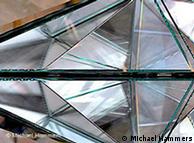此 AI 為
2009年12月6日 星期日
2009年9月11日 星期五
herbert a simon 叫 司马賀 則是天成
文学艺术 | 2009.09.10
Michael Hammers叫"司马瀚" 怪
herbert a simon 叫 司马賀 則是天成德国艺术家在中国建“水晶墙”
他生活在璀璨绚烂的世界里,整日与水晶、钻石和玻璃打交道,在幻想和理性设计以及光学技术间寻找平衡点,为人们献上一个又一个艺术精品。纽 约洛克菲勒中心施华洛世奇之星,大都会歌剧院舞台上的珠宝,施华洛世奇水晶宫殿,喜悦-水晶瀑布吊灯等都堪称是司马瀚(Michael Hammers)的代表作。 Bildunterschrift: Großansicht des Bildes mit der Bildunterschrift: 纽约洛克菲勒中心施华洛世奇之星
Bildunterschrift: Großansicht des Bildes mit der Bildunterschrift: 纽约洛克菲勒中心施华洛世奇之星
生逢全球一体化年代,正值壮年的司马瀚早已跨出了德国,在纽约开设了自己的设计公司,北京、莫斯科都有他参加的项目。如同其浪漫奇特的作品一样,司 马瀚的艺术生涯也由一个个意外和机遇组成。他透露,每次签约都源自一个意外的电话。而北京环球金融中心"水晶墙"项目合同则是受到香港华商富豪之一李兆基 的恒基产业委托。
2007年,司马瀚意外接到了恒基产业的电话,对他来说,参加北京项目无疑是一次创作理念和文化冒险精神的挑战。面对一个新天地,司马瀚总是对自己说,开始干吧。好在他是处理切割水晶的高手,是演绎和强化直觉的行家。
"水晶,钻石以及一切闪光发亮的宝石始终是纯粹、真实、富有的象征。在北京新环球金融中心建造水晶墙的目的是,借此表达一个想法,那便是在全球化进程中,人们的合作应建立在诚实的基础之上,让大家共同分享富裕生活。"
司马瀚将1200块经切割处理后的玻璃进行拼装,借助不同品质玻璃对光线的反映,加上适当的金银色调的部分渲染使整体玻璃平面产生水晶效果。虽说艺 术成果是耀眼夺目的,但其制作过程却异常艰难。司马瀚坦言,在历时两年的施工期间,他几度绝望,甚至认为自己走到了艺术创作的极限。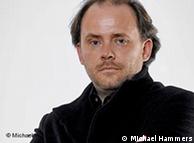 Bildunterschrift: Großansicht des Bildes mit der Bildunterschrift: Michael Hammers
Bildunterschrift: Großansicht des Bildes mit der Bildunterschrift: Michael Hammers
"最大的障碍当然是语言,即便有翻译陪同,也难以与合作伙伴进行思想沟通。第二大障碍是对颜色的理解。什么是理想的色调,什么样的色调会产生应有的 效果,浓度应该是怎样的。我不愿强迫对方接受我的想法,我很想了解中国工匠的想法,因为他们的天赋和某些技术处理方式给我留下了深刻的印象,我欣赏他们。 但在颜色的理解上,我很难将自己的想法传达给对方。"
绝望并不意味着放弃。绝望之中,司马瀚为自己的中国工匠创作了一首诗。据他所说,这首诗在施工现场发挥了作用,拉近了他与建筑工人间的感情距离。此外,尤其令司马瀚感到自豪的是,经过苦苦练习,他终于可以用中文朗诵这首诗了。
"你是我的眼我的手,
在你所做的事情中,
你拥有完全的自由。
艺术就是海阔天空,
我信任你毫无保留。"
9月12日,司马瀚将在北京环球金融中心的"水晶墙"上署名,当然,这首诗也将成为他署名的 一部分。在老一代德国著名建筑师施佩尔(Speer)和格尔康(Gerkan)在中国建筑市场大显身手的同时,像司马瀚这样的新一代已紧跟而上。面对文化 上的冲突和不理解,他们开始尝试着走克服文化障碍,将不同文化艺术传统融入自己的创作之中的新路,司马瀚的诗作就是一例。他说,与中国工匠的朝夕相处,辩 论争执,共同进餐,使他对中国有了新的认识,他开始留恋那里的一切,现在他翘首期盼着又一个来自中国的意外电话。
作者:祝红
责编:叶宣
2009年8月31日 星期一
2009年8月29日 星期六
On Leadership by James March,Thierry Weil
Amazon.com: On Leadership (9781405132473): James March, Thierry ...
- [ 翻譯此頁 ]On leadership - Google 圖書結果
由 James G. March, Thierry Weil 著作 - 2005 - Business & Economics - 128 頁
These essays are based on March’s notes for his course lectures.總圖4F科技資料區 HD57.7 M3919 2005
2009年8月4日 星期二
Intuition or that 'gut feeling'
Spectrum | 04.08.2009 | 17:30
Intuition or that 'gut feeling'
The Oxford English Dictionary defines it as “the instant apprehension by the mind without the reasoning process”. Whatever it is, it plays a large part in many of our decisions. It is a widespread but little understood phenomenon. As Stephen Beard reports from London it has become the subject of scientific study.Audios and videos on the topic
2009年7月26日 星期日
Scientists Worry Machines May Outsmart Man
Scientists Worry Machines May Outsmart Man
By JOHN MARKOFF
A robot that can open doors and find electrical outlets to recharge itself. Computer viruses that no one can stop. Predator drones, which, though still controlled remotely by humans, come close to a machine that can kill autonomously.

This personal robot plugs itself in when it needs a charge. Servant now, master later?
Multimedia
Related
Times Topics: Robots | Artificial Intelligence
RSS Feed
Readers' Comments
Readers shared their thoughts on this article.
Impressed and alarmed by advances in artificial intelligence, a group of computer scientists is debating whether there should be limits on research that might lead to loss of human control over computer-based systems that carry a growing share of society’s workload, from waging war to chatting with customers on the phone.
Their concern is that further advances could create profound social disruptions and even have dangerous consequences.
As examples, the scientists pointed to a number of technologies as diverse as experimental medical systems that interact with patients to simulate empathy, and computer worms and viruses that defy extermination and could thus be said to have reached a “cockroach” stage of machine intelligence.
While the computer scientists agreed that we are a long way from Hal, the computer that took over the spaceship in “2001: A Space Odyssey,” they said there was legitimate concern that technological progress would transform the work force by destroying a widening range of jobs, as well as force humans to learn to live with machines that increasingly copy human behaviors.
The researchers — leading computer scientists, artificial intelligence researchers and roboticists who met at the Asilomar Conference Grounds on Monterey Bay in California — generally discounted the possibility of highly centralized superintelligences and the idea that intelligence might spring spontaneously from the Internet. But they agreed that robots that can kill autonomously are either already here or will be soon.
They focused particular attention on the specter that criminals could exploit artificial intelligence systems as soon as they were developed. What could a criminal do with a speech synthesis system that could masquerade as a human being? What happens if artificial intelligence technology is used to mine personal information from smart phones?
The researchers also discussed possible threats to human jobs, like self-driving cars, software-based personal assistants and service robots in the home. Just last month, a service robot developed by Willow Garage in Silicon Valley proved it could navigate the real world.
A report from the conference, which took place in private on Feb. 25, is to be issued later this year. Some attendees discussed the meeting for the first time with other scientists this month and in interviews.
The conference was organized by the Association for the Advancement of Artificial Intelligence, and in choosing Asilomar for the discussions, the group purposefully evoked a landmark event in the history of science. In 1975, the world’s leading biologists also met at Asilomar to discuss the new ability to reshape life by swapping genetic material among organisms. Concerned about possible biohazards and ethical questions, scientists had halted certain experiments. The conference led to guidelines for recombinant DNA research, enabling experimentation to continue.
The meeting on the future of artificial intelligence was organized by Eric Horvitz, a Microsoft researcher who is now president of the association.
Dr. Horvitz said he believed computer scientists must respond to the notions of superintelligent machines and artificial intelligence systems run amok.
The idea of an “intelligence explosion” in which smart machines would design even more intelligent machines was proposed by the mathematician I. J. Good in 1965. Later, in lectures and science fiction novels, the computer scientist Vernor Vinge popularized the notion of a moment when humans will create smarter-than-human machines, causing such rapid change that the “human era will be ended.” He called this shift the Singularity.
This vision, embraced in movies and literature, is seen as plausible and unnerving by some scientists like William Joy, co-founder of Sun Microsystems. Other technologists, notably Raymond Kurzweil, have extolled the coming of ultrasmart machines, saying they will offer huge advances in life extension and wealth creation.
“Something new has taken place in the past five to eight years,” Dr. Horvitz said. “Technologists are replacing religion, and their ideas are resonating in some ways with the same idea of the Rapture.”
The Kurzweil version of technological utopia has captured imaginations in Silicon Valley. This summer an organization called the Singularity University began offering courses to prepare a “cadre” to shape the advances and help society cope with the ramifications.
“My sense was that sooner or later we would have to make some sort of statement or assessment, given the rising voice of the technorati and people very concerned about the rise of intelligent machines,” Dr. Horvitz said.
The A.A.A.I. report will try to assess the possibility of “the loss of human control of computer-based intelligences.” It will also grapple, Dr. Horvitz said, with socioeconomic, legal and ethical issues, as well as probable changes in human-computer relationships. How would it be, for example, to relate to a machine that is as intelligent as your spouse?
Dr. Horvitz said the panel was looking for ways to guide research so that technology improved society rather than moved it toward a technological catastrophe. Some research might, for instance, be conducted in a high-security laboratory.
The meeting on artificial intelligence could be pivotal to the future of the field. Paul Berg, who was the organizer of the 1975 Asilomar meeting and received a Nobel Prize for chemistry in 1980, said it was important for scientific communities to engage the public before alarm and opposition becomes unshakable.
“If you wait too long and the sides become entrenched like with G.M.O.,” he said, referring to genetically modified foods, “then it is very difficult. It’s too complex, and people talk right past each other.”
Tom Mitchell, a professor of artificial intelligence and machine learning at Carnegie Mellon University, said the February meeting had changed his thinking. “I went in very optimistic about the future of A.I. and thinking that Bill Joy and Ray Kurzweil were far off in their predictions,” he said. But, he added, “The meeting made me want to be more outspoken about these issues and in particular be outspoken about the vast amounts of data collected about our personal lives.”
Despite his concerns, Dr. Horvitz said he was hopeful that artificial intelligence research would benefit humans, and perhaps even compensate for human failings. He recently demonstrated a voice-based system that he designed to ask patients about their symptoms and to respond with empathy. When a mother said her child was having diarrhea, the face on the screen said, “Oh no, sorry to hear that.”
A physician told him afterward that it was wonderful that the system responded to human emotion. “That’s a great idea,” Dr. Horvitz said he was told. “I have no time for that.”
Ken Conley/Willow Garage2009年7月24日 星期五
Herbert Simon From Economist.com
Guru
Herbert Simon
Mar 20th 2009
From Economist.com
Herbert Simon (1916-2001) is most famous for what is known to economists as the theory of bounded rationality, a theory about economic decision-making that Simon himself preferred to call “satisficing”, a combination of two words: “satisfy” and “suffice”. Contrary to the tenets of classical economics, Simon maintained that individuals do not seek to maximise their benefit from a particular course of action (since they cannot assimilate and digest all the information that would be needed to do such a thing). Not only can they not get access to all the information required, but even if they could, their minds would be unable to process it properly. The human mind necessarily restricts itself. It is, as Simon put it, bounded by “cognitive limits”.
Hence people, in many different situations, seek something that is “good enough”, something that is satisfactory. Humans, for example, when in shopping mode, aspire to something that they find acceptable, although that may not necessarily be optimal. They look through things in sequence and when they come across an item that meets their aspiration level they go for it. This real-world behaviour is what Simon called satisficing.
He applied the idea to organisations as well as to individuals. Managers do much the same thing as shoppers in a mall. “Whereas economic man maximises, selects the best alternative from among all those available to him,” he wrote, “his cousin, administrative man, satisfices, looks for a course of action that is satisfactory or ‘good enough’.” He went on to say: “Because he treats the world as rather empty and ignores the interrelatedness of all things (so stupefying to thought and action), administrative man can make decisions with relatively simple rules of thumb that do not make impossible demands upon his capacity for thought.”
The principle of satisficing can also be applied to events such as filling in questionnaires. Respondents often choose satisfactory answers rather than searching for an optimum answer. Satisficing of this kind can dramatically distort the traditional statistical methods of market research.
Simon, born and raised in Milwaukee, studied economics at the University of Chicago. “My career,” he said, “was settled at least as much by drift as by choice”, an undergraduate field study developing what became his main field of interest—decision-making within organisations. In 1949 he moved to Pittsburgh to help set up a new graduate school of industrial administration at the Carnegie Institute of Technology. He said that his work had two guiding principles: one was the “hardening of the social sciences”; and the other was to bring about closer co-operation between natural sciences and social sciences.
Simon was a man of wide interests. He played the piano well—his mother was an accomplished pianist—and he was also a keen mountain climber. At one time he even taught an undergraduate course on the French Revolution. He was awarded the Nobel Prize for economics in 1978, to considerable surprise, since by then he had not taught economics for two decades.
Notable publications
With March, J.G., “Organisations”, John Wiley & Sons, 1958; 2nd edn, Blackwell, 1993
“Administrative Behaviour: A Study of the Decision Making Processes in Administrative Organisation”, The Macmillan Co, New York, 1948; 4th edn, Free Press, 1997
James March
Guru
James March
Jul 24th 2009
From Economist.com
James March (born c 1928) is the gurus’ guru, a man who once came second in just such a poll to the incomparable Peter Drucker (Harvard Business Review, December 2003; see article). An unostentatious academic who spent most of his life on the faculty of Stanford University, described by Harvard Business Review as “a polymath whose career has encompassed numerous disciplines … he has taught courses on subjects as diverse as organisational psychology, behavioural economics, leadership, rules for killing people, friendship, decision-making, models in social science, revolutions, computer simulation and statistics”. A polymath indeed.
He is best known for his work on the behavioural theory of organisations, working at one time with Herbert Simon (see article), the definer of the idea of satisficing, with whom he wrote a classic book, “Organisations”. In this, and in the book he wrote with Richard Cyert, he developed a theory about the “boundedness” of managers’ behaviour. Just as consumers go for the satisfactory rather than the “best” decision when purchasing, so managers go for the less-than-rational decision when on the job, because they are necessarily restricted by human and organisational limitations.
In a more recent paper, which he entitled “The Hot Stove Effect”, after Mark Twain’s point that cats who learn to avoid hot stoves learn to avoid cold ones too, March warned that the way in which we learn to reproduce success results, inevitably, in a bias against both risky and novel alternatives.
John Padgett, a professor at the University of Chicago, wrote in the journal Contemporary Sociology that “Jim March is to organisation theory what Miles Davis is to jazz … March’s influence, unlike that of any of his peers, is not limited to any possible subset of the social science disciplines; it is pervasive”.
March has also written seven books of poetry and made a film (called “Don Quixote’s Lessons for Leadership”). His background notes to the film include a short prose poem:
That if we trust only when
Trust is warranted, love only
When love is returned, learn
Only when learning is valuable,
We abandon an essential feature of our humanness.
His love of language has led him to create some colourful metaphors—the garbage-can theory of organisational choice, for instance, which defines an organisation as “a collection of choices looking for problems; issues and feelings looking for decision situations in which they might be aired; solutions looking for issues to which they might be the answer; and decision-makers looking for work”. Problems and solutions flow in and out of the garbage can. Which problems get attached to which solutions is largely a matter of chance.
Notable publications
With Simon, H., “Organisations”, John Wiley & Sons, 1958; 2nd edn, Blackwell, 1993
With Cyert, R., “A Behavioural Theory of the Firm”, Prentice Hall 1963; 2nd edn, Blackwell Business, 1992
“A Primer on Decision Making”, Free Press, New York, and Maxwell Macmillan International, Oxford, 1994
“The Pursuit of Organisational Intelligence”, Blackwell, 1999

More management gurus
This profile is adapted from “The Economist Guide to Management Ideas and Gurus”, by Tim Hindle (Profile Books; 322 pages; £20). The guide has the low-down on more than 50 of the world’s most influential management thinkers past and present and over 100 of the most influential business-management ideas. To buy this book, please visit our online shop.
2009年7月4日 星期六
基于实践的微观经济学 1996
作者:[美]赫伯特•西蒙 著
译者:孙涤 译
出版时间:2009年4月第1版
开本:32开
定价:15.00元
ISBN:978-7-5432-1577-1
出版者:格致出版社
内容简介
本书是诺贝尔经济学奖获得者赫伯特•西蒙晚年在意大利客座时三次演讲的汇集,分别围绕有限理性、企业组织理论、经济学理论的实证检验三个问题,厚积薄发、深入浅出地检讨了经济学中不少有争议的方法论和价值论问题。
读来尤为过瘾的是,作为一个执着探索的学者和斗士,西蒙曾频频投入其中不少的关键论战,舌战群儒应答经济学家对其人性假设的质疑。智慧的火花、犀利的比喻在书中俯拾皆是,读来脍炙人口。
书的最后附有西蒙的自传,细数了西蒙如何走上治学道路,对于研究西蒙的个人成长和学术成就都有重要的帮助。
作者简介
赫伯特•西蒙,1978年诺贝尔经济学奖获得者。其主要学术贡献包括有限理性理论和组织决策理论。其主要著作有: 《行政管理行为》(1945)、 《人类模型》(1957)、 《组织》(1958)、《管理决策的新科学》(1960)、 《发明的模型》(1977)、《思想模型》(1979年)。
西蒙学养精深,研究所涉从心理学、经济学、政治学、行政学到生物学、统计计量学、管 理学、运筹学,乃至物理学、力学和计算机科学,无不建树颇丰。除了诺贝尔经济学奖(1978 年)外,他又获得过计算机界的最高奖——图林奖(1975),管理科学的最高奖——冯•纽曼奖(1988),美国政治学的最高奖——麦迪森奖 (1983),以及难以胜数的其他奖项。众多的领域凡经他的研究涉及的,皆能臻于至境。
目录
译者序
前言
讲演一 决策中的理性
1. 理性概念的进展;
2. 当代选择理论;
3. 理性的多元性;
4. 历史回顾;
5. 理论的实证检验。
参考文献
讲演一的讨论
演讲二 组织在经济中的角色
1. 组织与市场;
2. 利他主义和组织认同;
3. 组织、管理和经济;
4. 结论
参考文献
讲演二的讨论
讲演三 经济学的实证根据
1.理论怎样才算具体?
2.数据对理论的作用;
3.经济过程的数据来源;
4.在工商企业之外寻找实证数据;
5. 企业的的决策:案例研究;
6.经济史;
7.“应用”经济学的数据;
8.调查技术;
9.结论
参考文献
讲演三的讨论
赫伯特•西蒙的自传
代译序
贤哲西蒙
西蒙教授于2001年二月九日逝世,享年八十四岁。这当然是研究学界的一大损失。在他的追悼会上,保罗.萨缪尔逊说 西蒙是他所遇到过的人当中最为睿智者,肯定不是应景的谀词;而经济教科书上常称西蒙是经济学家之中的经济学家,亦非溢美的褒奖。 然而国内新闻传媒对他的逝世却鲜少报导,重视程度尚不及一个三流明星。自然啦,要把西蒙教授的贡献同赚钱致富能扯上一点关系的话, 即使说是间接的都还嫌勉强呢。 不过他的影响之深远,尤其在阐述人类做选择的动机、限度、过程、和评价方面的里程碑贡献,依笔者愚见,确实是出乎其类而拔乎其粹的。
西蒙的广博可从他的研究范围得到佐证, 从心理学、经济学、政治学、行政学到生物学,统计计量学、管理学、运筹学、乃至物理学、力学和计算机科学,他无不建树宏富。仅从他在卡内基.梅隆大学的网页(www.psy.cmu.edu/psy/faculty/hsimon) 上所列出的发表了的研究成果就有千种之多。 至于他研究的精深,亦可从所获得的奖项略见一斑。除了诺贝尔经济奖(1978年)外,他又获得过计算机界的最高奖--图林奖(1975),管理科学的最高 奖——冯.纽曼奖(1988),美国政治学的最高奖--麦迪森奖(1983),以及难以胜数的其他奖项。众多的领域凡经他的研究涉及到的,皆能臻于绝境。 这种智慧,这类点石成金的功力, 即使不说“绝后”,至少可在“空前”之畴。
在诸多的社会学科中, 经济学勉强能挤入科学之亚流,算是个例外。以方法论,经济学奋力沿用并融合自然科学及数学的成果,称得上谨严;然而就对象论,经济学所不得不面对其所处理 的对象——人的行为的变异性,而使物理科学方法的逻辑分析每有捉襟见肘的缺憾。大哲学家伯特兰.罗素曾声称经济学太容易, 他不屑于去深究;大物理学家马克.普郎克却承认经济学太艰难, 故不敢去涉猎。两位贤哲大概都不会讳认经济学的晦涩吧。
西蒙早期的训练是行政管理。对公共决策过程的切近观察,使他感悟到人群和个人行为的独特逻辑和外在的物理环境是大不 相同的, 这也许能帮助解释,为什么西蒙对经济学的研究打一开始就不入主流的原因。 从1940年代起, 西蒙着重研究人类知性行为的因果秩序,极具原创性。他的研究成果,也是他的博士论文,总结成《管理行为》(Administrative Behavior)一书,于1947年问世。该书堪称经典,历久弥新地成为众多管理理念的前导和研究方法的源头。在1997年第四版的导言里,西蒙明确表 示,原书的结论在五十年里并没有大的变动,大部分的内容还值得保留。通讯和信息处理技术的进步影响了人们的社会实践和社会价值观,改变着管理和决策过程, 但是人类组织四千年来的决策(或选择)机制以及群体行为的基本架构却无本质的改变。(笔者强力推荐《管理行为》第四版的中译本(詹正茂译), 由机械工业出版社 2004年出版。该书言简意赅,切中要旨,是一本极为难得的好书。)
西蒙的深邃理解和透彻剖析引导他得出不少基础创新的结论, 和主流学派为了简化分析的需要而提出的牵强假设大异其趣,产生龃龉甚至冲突。这也引致了不少质疑,使他和主流经济学派渐行渐远。虽然在早期,西蒙的理论多 半建立在他个人的天才卓识之上,没经过太多严格的科学试验证明。但在1950年代后,管理的实践和行为科学的实验逐步证实了,西蒙非凡的洞察力是符合实际 和领先群伦的。 西蒙在1957年出版的“人、社会和理性模式“一书, 连同他用生物实验方法揭示出来,人和小白鼠一样, 他们追求自身利益的理性都是有限度的。西蒙令人信服地证明,和纯逻辑推导的结果相异, 人类的自利追求并非无止境的全局最大化(global rationality),而是止于适度的满足, 这种 “有限度理性”(bounded rationality)的诠释对经济学 的“理性人”基本公理假设构成了严重的挑战。 西蒙对统计和计量学科的理论研究导致他倡导非对称分布函数(俗称Zipf分布)来替代费雪的正态分布。这也说明了西蒙相信人类的行为倾向性强烈, 他们所追求、向往的和所畏惧、回避的原本就是非常地不对称。比起正态分布所暗指的“过犹不及”,把过分的赢利和过度的亏损都处理为风险,是人们共所趋避的 假设,更要切合实际。
西蒙戏称他幸好没有沦为全职的经济学家。事实上,他那广泛的兴趣和深厚的人文关切也不允许他仅仅停留在经济学的理论研究。西蒙浩瀚的智慧又使他得以游刃有余,开拓出多种领域。
当 之无愧的,西蒙是人工智能和数学定理计算机证明的奠基者之一。他和阿伦.纽伟尔合作的一系列开创性的研究成果改变了我们对人脑和电脑的关系的理解。纽伟尔 原是卡内基.梅隆大学的博士班学生, 但读了没多久,学院里所有的教授反而都会赶去聆听纽伟尔的报告会,以便更新自己的知识结构。 西蒙是纽伟尔的博士导师,但两人介入师友之间, 从五十年代中期就开始合作,用电子计算机来证明罗素和怀特海的名著“数学原理”中的一些逻辑命题。当西蒙向罗素函告他们的研究成果时,他不无得意地指出 “智慧和博学并不总是一回事”,并称计算机的智慧是如此的卓越,以至还得瞒着不让学童知道,以免孩子们会失去信心不肯再去费心去学习加减乘除! 西蒙对机器智慧的信心和期待同他对人类理性的质疑和保留成了有趣的对照。他对人工智能过分乐观的预言, 即六十年代后计算机可望赛过人脑, 至今未能兑现。现在学界已倾向于相信, 计算机将会被证明永远无法替代人脑, 尤其是后者的想象力。
西蒙的研究轶事,在他的自传(Models of My Life, 1996)中有不少描写,已有中文译本( 《我生活的种种模式》 (曹南薇等译),1998年东方出版中心出版), 笔者就不再赘述了,这里仅略谈个人的一些感受。
西蒙对中国人一向友好,紧跟着尼克松,他早在1972年即已访华。所以七十年代末开放伊始, 我念硕士课程时,就得以接触到他的一些研究。我当时的感觉十分明显,西蒙的文章,你只消读上第一、二页,就知道是出自大师手笔,就像听了帕瓦罗蒂的第一句 歌声一样。而他的通达,也是直扣人心弦的,我深深地为他所折服,常思他日若能及门聆教能有多好。所幸的是,我的博士导师之一 比尔.库柏教授是他的终身挚友和诤友。 库柏教授也是一位极其富有创造力和个人风采的大师级人物。西蒙在自传里通篇谈到比尔, 并辟有一章专门讨论他和比尔的交谊。 库柏曾任卡内基.梅隆大学的管理学院院长多年,事实上正是他将西蒙引荐到该校的。事实上,西蒙和他太太也是经库柏介绍才结识的。
1989年卡内基.梅隆大学有一座大楼以库柏命名,我出差去匹兹堡时,受库柏师之命去拜望西蒙, 同时也邀请他为中国留美经济学会的年会作演讲。当时我担任学会的会长,而西蒙是学会的顾问。西蒙的谈话睿智亲切,使人有如沫春风的感受。我向他请益治学的 方法,记得他用了一些浅显的比喻来引导,道出人类认知的通病,类似人们在黑夜中遗失了东西,常会到有烛光的地方而不去丢失的地点去寻找。他又指出,通常学 者们建立的研究模型,想靠简化来加强理解要点,和把握丰富现实的关系,如同地图和地域的关系:地图的比例尺要是太大,譬如1:1千万,则众多具体细节必然 遭到忽略,无法据以找到准确的地址;然而要是地图的比例尺过小,比如1:5的话,则地图就会太大不便携带,从而也失去其指引的功能。西蒙的这两个比喻我常 在心里揣摩,渐渐也似有所领悟。经济学的模型(其他学科亦如是)对现实的诠释能力,若不能把握一个适当的“度”的话,难免滑入吊诡之境。人们不是常常受到 一些分析模型的困扰吗?囿于信息、条件、手段的限制,不得不简易化。然而正是模型的这些权宜而牵强的假设,致使模型建成后推导出来的解决方案,对于实际问 题的解决既无益又无补。因为这类“模型方法”,削足适履或削头适冠般地,已经把造成问题徵节的因素也一并舍象掉了!
我访问西蒙办公室的次晨, 正值圣诞节后,匹滋堡的气温骤降至零下二十几度,打破了数十年的记录。西蒙却如约前来,在我们的年会上作了热情洋溢的致辞,给了与会者难忘的经验。 他也将自己的二卷本论文集题赠给我,署名“司马贺”。除了“贺”字有些走样之外,中国字竟写得中规中矩。西蒙能讲一些中国话,我表示钦佩之后,他又随口讲 了几句日语。他横溢的智慧总是那样随时俯拾即可。
他的那套论文集我一直珍藏着,惭愧的是生性疏懒,几乎没从文集中再认真读过他的文章。 不过我倒是拜读了他晚年出版的 “基于经验的微观经济学”(“An Empirically-Based Microeconomics”, Cambridge University Press 1998), 是他在意大利客座时三次演讲的汇集。西蒙以他的阅历和洞察力,厚积薄发地检讨了经济学不少有争议的方法论和价值论的问题。 他作为一个执着探索的学者和斗士,曾频频投入其中不少关键论战,读来脍炙人口。我深受该书的启发,也因此向读者推荐。我以为,对于其他学人,这本书价值也 应当非同小可。
孙涤 悼念西蒙老师于
北京, 2001年2月
(本文收入我的随笔集《别在市场里发呆》(上海人民出版社,2004年);2009年三月重订于洛杉矶)
2009年6月16日 星期二
HERBERT A. SIMON 論CONFERENCE METHOD 之解
現在美國時間是15日
我要為先生作冥壽
拿起我翻譯的 SIMON管理行為
先生提到培訓方式 讚揚 CONFERENCE METHOD
我查大英百科不得其解
(不過它有 conference of birds 我知道這部百鳥朝鳳)
conference 就是聚會 討論
Exeter is noted for its Harkness education, a system based on a conference format of teacher and student interaction, similar to the Socratic method of learning through asking questions and creating discussions.[4]
On April 9, 1930, philanthropist and oil magnate Edward Harkness wrote to Exeter's Principal Lewis Perry regarding how a substantial donation he had made to the academy might be used for his vision of a new way of teaching and learning:
What I have in mind is a classroom where students could sit around a table with a teacher who would talk with them and instruct them by a sort of tutorial or conference method, where each student would feel encouraged to speak up. This would be a real revolution in methods.
The result was Harkness Teaching, in which a teacher and a group of students work together, exchanging ideas and information, similar to the Aristotelian method of antiquity. In November 1930 Harkness provided a $5.8 million gift to support this initiative. Since then, the academy's principal mode of instruction has been by discussion, "seminar style", around an oval table known as the Harkness Table.
2009年6月4日 星期四
We must eat a peck of salt with a friend before we know them.
peck, a peck of salt
“We must eat a peck of salt with a friend before we know them.” –Cervantes 另外說法是蘇格蘭諺語這是Herbert Simon在 Models of Thought (Volume I) 引言
2009年6月2日 星期二
博士論文幾可拿諾貝爾經濟學獎
(這會缺少組織歷煉的智惠 不過不會損及某些重要慧見)
年青的Drucker當然可以推想生意差的時候 公司的慷慨 如何保持下去
As GM Goes So Goes California in Pensions: Roger Lowenstein
Bloomberg - USA
But observers such as Peter Drucker, then a young consultant, wondered what would happen if GM's business turned south while its pension obligation remained ...
2009年6月1日 星期一
BLOGS
......延伸閱讀:
HC的網址:http://www.deming.com.tw
台灣戴明圈 A Taiwanese Deming Circle : http://demingcircle.blogspot.com/
哇 榮幸 胡小姐給我十幾年前的SITE連結
很巧 昨天寫
"昨天無意中回SU 參訪者十來萬 我ㄧ年多沒回去SU 連 PASS WORD都忘了 去年朋友從大陸貼MAIL 我還不知道
或許是品質學會將我 LINK去那 所以領導手冊等偏千多人看"
SU= Simon University
2004年紀念 HERBERT SIMON的 "新聞台" ----這是PCHOME的 記得那時候 常常接到妙文"從異鄉發現台灣" 這SU 是很值得懷念的合作成績
後來再花ㄧ年搞兩 BLOGS QUALITY TAIWAN 等等
2007年 發現可以在GOOGLE的 BLOGSPOT 寫 順便賺點外快 沒想到走入中國某朋友的說法:"神人" 意思是一口氣可以寫二十幾BLOGS 當然這些品質堪虞
近三月前 我還開始試驗 手邊沒ADSL等 如何維護這些"筆記本"
我現在可能"戒BLOGS"還沒成功
謝謝 妳/妳們精采的"部落"
5月18日 我聽某都蘭的朋友說 都蘭意思類似"朋友 團結 ㄧ體 幹大事去" 就用它說謝
Simon University"新聞台"
我ㄧ年多沒回去 PASS WORD忘了 去年朋友從大陸貼MAIL 我還不知道
或許是品質學會將我LINK去那 所以領導手冊等偏千多人看"
SU= Simon University
2004年紀念 HERBERT SIMON的 "新聞台"
2009年5月24日 星期日
New Puzzles That Tell Humans From Machines
New Puzzles That Tell Humans From Machines

One test uses identification programs to decipher images scanned from books for digitization. Another requires people to flip an image right-side up.
ROGUE programs try their best to register at Web sites and then wreak havoc, but a clever puzzle often bars them from entry: a set of distorted, squiggly letters and numbers that people can decipher and type correctly for admission, but that machines still can’t.
Well, at least for the moment.
Now, to stay one jump ahead of fraudsters and their automated programs, researchers are devising more versions of the puzzles, called captchas, to help sites block abuse that includes spam e-mail, illegal postings and skewed online voting.
Researchers at Google are testing a new captcha that requires people to turn upright randomly rotated images, like that of a parrot perched temporarily upside-down on a leafy branch. The task is a breeze for people — using a cellphone touchscreen, for example, to flip the image — but hard for machines.
The new puzzles could be built around a site’s theme — for instance, cartoons at a Disney site, or objects for sale at eBay, said Rich Gossweiler, a senior research scientist at Google who led the team that developed the system. It can be put in place rapidly, he said, and has an almost limitless supply of images. “Our technique expands the vocabulary of captchas” beyond obfuscated characters, he said. “And it might make the process less of a chore. It’s fun to solve a puzzle.”
The program rejects images like those for human faces that computers have already learned to recognize, he said. “We first remove all those images that computers can turn upright, and then the ones that humans have trouble with,” he said.
People may have trouble orienting abstract art, but they can quickly distinguish a parrot’s image, for example, even if it is shown amid objects like leaves. “We can see it needs to be upright,” he said, “but it’s more difficult for the computer to segment out the parrot” and then orient it.
Google can keep replenishing its library of images by testing new candidates. “If a bunch of people put an image upright, we keep it,” he said. But if the image is troublesome, it will be discarded.
Another new approach in the captcha arms race was developed by Luis von Ahn, a professor at Carnegie Mellon University and a pioneer in captcha development. (The term is short for “completely automated public Turing test to tell computers and humans apart,” a reference to the test proposed by Alan Turing, the British mathematician, to determine if a computer can be said to think like a human.)
Dr. von Ahn has created a more secure version of audio captchas used by the visually impaired in surfing the Internet with screen readers. Traditionally in audio captchas, a distorted voice reads numbers and the user types them in. But research led by Dr. von Ahn and a student, Jennifer Tam, showed that such captchas are easily deciphered by automatic programs and may lead to security risks.
In the new captchas, which Dr. von Ahn said had proved to be more secure in research trials, the audio clips are not of numbers, but of phrases drawn from old radio shows posted on the Internet Archive. They will be easy for people to solve, but tough for automated programs.
Dr. von Ahn has also created a free system, called reCaptcha (recaptcha.net), now used by about 120,000 sites including Ticketmaster, Craigslist, Facebook, Twitter and The New York Times.
The system has an unusual twist that provides an added benefit to projects that are digitizing books and papers in archives: the source of the wiggly images that people must decipher is not random. The images are drawn from books and other media that are being digitized in mass projects, but that machines haven’t been able to read because, for instance, the page is wrinkled.
Automatic character recognition lets people who are having the work scanned know which words it cannot read. These are the words that recaptcha farms out and, once they are interpreted, returns to the original document. In this way, word by word, most of the mystery words are deciphered, in this case by humans. “We are digitizing about 25 million words per day by having people type in captchas,” Dr. von Ahn said.
The audio captchas are also being used for transcription and digitization projects. “We are doing both speech and text,” Dr. von Ahn said. “Take your choice.”
The Times is paying reCaptcha for its help in digitizing its archives, said Marc Frons, chief technology officer, digital operations. So far, puzzling words in archives covering about 30 years have been deciphered with reCaptchas, he said.
Many people worry that as machines become smarter, the days of captcha protection will be numbered, whether the puzzles take the form of distorted text, audio snippets or rotated images. But Henry Baird, a professor in the department of computer science and engineering at Lehigh University, disagrees. Dr. Baird and colleagues have proposed a system for captchas that, like Google’s, can be woven into the theme of a Web site.
“Machines’ abilities are slowly improving,” he said, “but I think there is still a huge gap between human inborn perceptual abilities and machine skills.”
E-mail: novelties@nytimes.com
2009年5月7日 星期四
stronger universities 資源必須合作互通之說法
讀這 想起Simon 喜歡用 stronger universities 資源必須合作互通之說法
2009年5月1日 星期五
2009年4月29日 星期三
集體決策如何誤入歧途
例子太多了﹐找到幾個並不難﹕
華爾街公司的薪酬委員會給那些幾乎摧毀了全球金融體系的人發放了數百萬美元的獎金。

慈善機構的投資委員會也和個人投資者一樣﹐在馬多夫(Bernard Madoff)的魔咒下摔的很慘﹐常常是頃刻之間損失了數百萬美元。
共同基金的董事會對基金經理們大量買進問題抵押貸款證券視而不見。
州理事會批准了用旨在幫助家庭為孩子教育經費攢錢的“529計劃”進行高風險投資。這樣以來﹐損失的不只是錢﹐夢想也隨之破滅了。
群眾的智慧也不過如此。史坦福大學組織心理學家薩頓(Robert Sutton)說﹐最好的團隊比其中最好的成員還要好﹐而最差的團隊則比其中最差的成員還要差。這是因為委員會等組織往往要麼就意見統一地跟著領導跑﹐要麼就分化成兩個對抗的陣營。
杜克大學商學院的心理學家拉里克(Richard Larrick)說﹐要想讓委員會等組織發揮良好作用﹐它們必須由觀點和經歷各異的人組成﹐這些人還要勇於發表自己的看法。他們還必須能夠有效地選擇和處理信息﹐並努力從錯誤中吸取教訓。
不過﹐委員會往往沒有發揮絲毫作用﹐導致持續的目光短淺、無法堅持戰略性計劃、一味追逐潮流、並且有推脫責任的傾向。簡單講﹐儘管投資委員會和理事會有權有名﹐他們也只是凡人。
幸運的是﹐委員會等組織可以利用一些已經過實際檢驗的手段來改進決策。有些手段甚至個人投資者也可以使用。下面就是其中幾種方法﹕
對成功的因素進行衡量。當選擇一位外部投資經理時﹐委員會應該根據研究和經驗﹐確定哪些因素可以預示成功。最有可能的因素包括﹕低成本、嚴格的風險控制、長遠的投資計劃、任期較長的經理。這些因素中每一個都可以用客觀的數據加以衡量。
分析數據。收 集幾位基金經理在這些成功因素方面的數據。對於每個因素﹐將經理們分級(比如按從1到5分級)。只有從客觀證據中紀錄這些分數後﹐你才可以與投資經理見面。投資者然後應該按照同樣的標準給會面後的印象打分。最後﹐將全部因素的總分進行平均﹐分數最高的經理就是你的人選。僅憑這個步驟就可以防止給馬多夫這 樣的人開張巨額支票﹐原因是馬多夫很少與外部人士分享數據。
重新組織問題。委員會在考慮作出一項重大決策時﹐應該被分為“支持”和“反對”兩派﹐每派提出支持己方觀點的最佳論據。個人投資者也可以採取類似的做法﹐不僅要問經理在決策正確時能賺多少﹐還要問他們在決策失誤時可能會損失多少。爭取對每項投資想出3個支持的理由和3個反對的理由。
使用“5個為什麼”。不 要問那些答案是“是”或“不是”的問題﹐而是問“如何”和“為什麼”這樣的問題。不要問某人是否理應拿獎金﹐或是一個顧問是否對一個想法將產生巨額回報有 信心。而是問﹐某人為何應該拿獎金﹐或是為什麼這個想法非常好。然後﹐問問為什麼這個人知道那個答案是正確的。如果你連續問了5個這類“為什麼”的問題﹐ 很可能會令建議中的任何弱點暴露出來。
定義默認頭寸。哈佛大學商學院決策專家貝瑟曼(Max Bazerman)建議﹐投資者可以先假定理想的投資組合是分散化的一籃子低成本指數基金。任何背離這個戰略的投資都應該有非常有說服力的證據。
如果你看看字典里“oversight”的定義﹐你就會發現這個詞可以是監督的意思也可以是失察的意思。假如委員會和我們其餘的人養成了正確監管的習慣﹐我們的經濟狀況都會好的多。
Jason Zweig
(編者按﹕本文作者Jason Zweig是《華爾街日報》的個人理財專家﹐他在這裡向不知如何打理投資的讀者介紹一些理財小竅門。)
何謂管理科學放在管理行為一書當附錄
Simon 的 何謂管理科學放在管理行為一書當附錄
2009年4月25日 星期六
Why look under the hood?
| 書名/作者 | The philosophy of economics : an anthology / edited by Daniel M. Hausman |
| 出版項 | New York : Cambridge University Press, 2008 |
| 版本項 | 3rd ed |
| 總圖4F科技資料區 | HB71 P53 2008 | 2918442 | 可流通 |
| 經硏圖 | HB71 P53 2008 | 2815615 | 可流通 |
| 稽核項 | vii, 527 p. : ill. ; 24 cm |
| 附註 | Includes bibliographical references and index |
| 內容 | On the definition and method of political economy / John Stuart Mill -- Objectivity and understanding in economics / Max Weber -- The nature and significance of economic science / Lionel Robbins -- Economics and human action / Frank Knight -- Selected texts on economics, history, and social science / Karl Marx -- The limitations of marginal utility / Thorstein Veblen -- The methodology of positive economics / Milton Friedman -- Testability and approximation / Herbert Simon -- Why look under the hood? / Daniel M. Hausman -- Popper and Lakatos in economic methodology / D. Wade Hands -- Science and ideology / Joseph Schumpeter -- Welfare propositions of economics and interpersonal comparisons of utility / Nicholas Kaldor -- The philosophical foundations of mainstream normative economics / Daniel M. Hausman and Michael S. McPherson -- Why is cost-benefit analysis so controversial? / Robert H. Frank -- Capability and well-being / Amartya Sen -- Econometrics as observation : the Lucas critique and the nature of econometric inference / Kevin D. Hoover -- Does macroeconomics need microfoundations? / Kevin D. Hoover -- Economics in the laboratory / Vernon Smith -- Neuroeconomics : using neuroscience to make economic predictions / Colin F. Camerer -- The market as a creative process / James M. Buchanan and Viktor J. Vanberg -- What is the essence of institutional economics? / Geoffrey M. Hodgson -- The rhetoric of this economics / Deirdre N. McCloskey -- Realism / Uskali Mäki -- What has realism got to do with it? / Tony Lawson -- Feminism and economics / Julie A. Nelson -- Credible worlds : the status of theoretical models in economics / Robert Sugden |
| ISBN/價格 | 0521883504 (hardback) |
| 9780521883504 (hardback) | |
| 0521709849 (pbk.) | |
| 9780521709842 (pbk.) |
Three public lectures delivered by Professor Herbert A. Simon,
| 主要作者 | Simon, Herbert A. (Herbert Alexander), 1916-2001 |
| 書名/作者 | Three public lectures delivered by Professor Herbert A. Simon, Lee Kuan Yew distinguished visitor, 8-21 January 1989 |
| 出版項 | Singapore : University Liaison Office, National University of Singapore, 1989 台大"尚"無書 新加坡只在人工科學一書之"蝴蝶效應"提之 |
2009年4月23日 星期四
books vy HAS
The sciences of the artificialHerbert Alexander Simon 著 - 1996 - 231 頁Continuing his exploration of the organization of complexity and the science of design, this new edition of Herbert Simon's classic work on artificial... |
Administrative behavior: a study of decision-making processes in ... - 第 xxxi 頁Herbert Alexander Simon 著 - 1976 - 364 頁A more complete account of the research on problem-solving will be found in Allen Newell and Herbert A. Simon, Human Problem Solving (Englewood Cliffs, NJ. ... |
Models of Bounded Rationality: Empirically grounded economic reasonHerbert Alexander Simon 著 - 1997 - 479 頁 The third volume of Simon's collected papers continues this theme, bringing together work on this and other economics-related topics that have occupied his... |
Human Problem SolvingAllen Newell, Herbert Alexander Simon 著 - 1972 |
Models of Man: Social and RationalHerbert A Simon 著 - 1966 |
Protocol Analysis: Verbal Reports as DataK. Anders Ericsson, Herbert Alexander Simon 著 - 1993 - 496 頁 In this revised edition of the book that first put protocol analysis on firm theoretical ground, the authors review major advances in verbal reports over the... |
Scientific discovery: computational explorations of the creative processesPat Langley, Herbert A. Simon 著 - 1987 - 357 頁Scientific discovery is often regarded as romantic and creative - and hence unanalyzable - whereas the everyday process of verifying discoveries is sober and... |
Models of My LifeHerbert Alexander Simon 著 - 1996 - 415 頁"As much as any one person, Herbert A. Simon has shaped the intellectual agenda of the human and social sciences in the second half of the 20th century . |
An Empirically Based MicroeconomicsHerbert A. Simon 著 - 1997 - 235 頁In his Mattioli Lectures, Nobel Laureate Professor Herbert A. Simon directs attention to the kinds of empirical research that are necessary for progress in... |
Diagrammatic Reasoning: Cognitive and Computational PerspectivesB. Chandrasekaran, Janice Glasgow, N. Hari Narayanan 著 - 1995 - 780 頁Herbert Simon Diagrammatic reasoning -- the understanding of concepts and ideas by the use of diagrams and imagery, as opposed to linguistic or algebraic ... |
| 頁數檢索: | 1 | 2 | 3 | 4 | 5 | 6 | 7 | 8 | 9 | 10 | 下一頁 |
2009年4月11日 星期六
Herbert A. Simon也欣賞他。
「bernard」的搜尋結果
In his Introduction to the Study of Experimental Medicine of 1865, Claude Bernard (see Bernard, 1957) used his own researches on animal functions to show ...
He was also encouraging Bernard Lovell to develop cosmic ray studies by constructing a huge radio telescope at Jodrell ...
... from the twentieth century to Claude Bernard (c.1860), to Francois Magendie (c.1820), to Xavier Bichat (c.1800) and to Albrecht von Haller (c.1760). ...
Philosophically, like Claude Bernard, he was a follower of Auguste Comte, the founder of positivism. For positivists, science was the discovery of laws (not ...
It seems significant that both Berthelot and Bernard worked at the College de France, a privileged Parisian facility for research and special lecture ...
The promise of Bernard's Experimental Medicine (see Bernard, 1957) was clear and persuasive: what could be controlled in laboratory animals today might be ...
很抱歉,此頁的內容受到限制.
Bernard, C. (1957), An Introduction to the Study of Experimental Medicine, trans. HC Greene, New York. Berridge, V. (1996), AIDS in the UK: The Making of ...
Grmek, MD (1970), 'Claude Bernard', Dictionary of Scientific Biography, vol. 2, New York, 24-34. Guagnini, A. (1991), The Fashioning of ...
Holmes, FL (1974), Claude Bernard and Animal Chemistry, Cambridge, MA. Holmes, FL (1985), Lavoisier and the Chemistry of Life, Madison. ...
... 124 Becquerel, Alexandre, 151, 154 Becquerel, Antoine, 150 Becquerel, Henri, 151 Bernard, Claude, 13, 140-7, 152 Berthelot, Marcelin, 141-3 Berzelius, ...
Lovell, Bernard, 125 luxury goods, 72, 81 Macdonald, Michael, 47 Mach, Ernst, 145 machines collections of, 77, 94 efficiency of, 96-7 Magendie,
民國86年的「跨世紀之音」──二王一后演唱會
朱銘人間系列的,以二王一后為主角,卡列拉斯與多明哥坐著,黛安娜羅絲站著。
《實驗醫學研究導論》
這可能是我1997年寫的:
Claude Bernard(1813-78)著的《實驗醫學研究導論》(北京:商務。2007年,台北的書店還可以找到它),乃是法國戴明學會會長Jean-Marie 先生建議作為戴明(W. Edwards Deming)之「知識理論」之教材。去年讀它,記下的一句話是:「Art is I;Science is we.」。Herbert A. Simon也欣賞他。
今天在 生理人生 @YLib Blog 找到潘老師寫的四篇簡介;我希望讀者有空讀讀它。--Quality Times N° 64, Mar.11, 07;品質 時報 第64期:07年3月11日(周日)
2009年4月8日 星期三
组织
组织(原书第2版)
作者:詹姆斯·马奇(James G. March);赫伯特·西蒙(Herbert A. Simon);哈罗德·格兹考(Harold Guetzkow)/邵冲
出版社:机械工业出版社
出版日期:2008年3月 版次:
ISBN:711123497 页数:237
开本:16开包装:《组织》的出版宣告了组织作为一个独立研究领域的诞生。马奇和西蒙是决策理论学派的两位大师,本书作为他们的唯一合著,虽然备受关注和引述,但却从未被引进中国,这是第一次正式出版中文译本。 ????由于竞争、合作、人类认知和情感、外部环境等因素的影响,对组织过程的控制较为有限,而组织的参与者们尽可能以容易复制的方式来应对这些限制,本书的焦点正是这种复杂的组织行为。尽管大多数组织有等级制度,但组织过程决不...
has 圖
 | 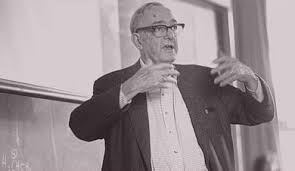 | 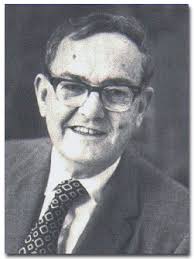 | 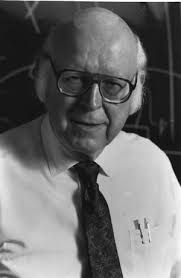 |  |
| Herbert A. Simon ... 306 x 260 - 23k - jpg media-2.web.britannica.com | Herbert A. Simon 390 x 226 - 15k - jpg www.cs.cmu.edu | HERBERT A. SIMON: ARTIFICIAL ... 251 x 335 - 45k - jpg www.harvardsquarelibrary.org | By Herbert A. Simon 300 x 460 - 14k - jpg www.nap.edu | 賽門(Herbert A. Simon)對經理人的 ... 250 x 300 - 15k - jpg www.cheers.com.tw |
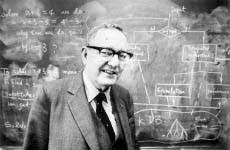 |  |  |  |  |
| ... winner Dr. Herbert A. Simon in ... 230 x 150 - 16k - jpg www.post-gazette.com [ 更多來自 www.post-gazette.com 的資訊 ] | 作者: Herbert A. Simon 294 x 450 - 27k - jpg otho.douban.com [ 更多來自 otho.douban.com 的資訊 ] | 作者: Pat Langley / Herbert A. Simon ... 291 x 453 - 20k - jpg otho.douban.com | ... in Memory of Herbert A. Simon 385 x 500 - 24k - jpg www.jjxj.org | ... in Memory of Herbert A. Simon 1024 x 768 - 129k www.jjxj.org |
 |  |  |  |  |
| 西洋棋大師 ... 250 x 199 - 20k - jpg sa.ylib.com | Herbert A. Simon 390 x 293 - 18k - jpg athir.blogfa.com | Herbert A. Simon: The Bounds of ... 240 x 240 - 11k www.amazon.com [ 更多來自 ecx.images-amazon.com 的資訊 ] | PUBLIC ADMINISTRATION by Herbert A. ... 240 x 240 - 5k - jpg www.amazon.com | Herbert A. Simon 162 x 227 - 14k - jpg nobelprize.org |
 | 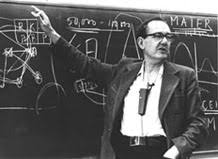 |  |  |  |
| Herbert A. Simon和Allen Newell,以及 ... 150 x 192 - 36k - jpg fxd.bokee.com | [Photo of Herbert A. Simon ... 218 x 159 - 15k - jpg shelf1.library.cmu.edu | Herbert A. Simon 151 x 151 - 5k - jpg www.studio.zp.ua | 出自MBA智库 ... 163 x 243 - 13k - jpg wiki.mbalib.com | Associate Dean Herbert A. Simon then ... 480 x 360 - 56k - jpg www.cs50.cs.cmu.edu |
",a[9],a[10]? " - "+a[10]:"","
",a[11],"");if(a[12]&&a[13])b.push('
[ ',a[13]," ]");b.push("");return b.join("")},p:function(){return{}}},q={c:"",w:function(){this.updateNavbar();this.z()},updateNavbar:function(){var a=document.getElementById("navbar");if(a){var b=n.a(),c=a.getElementsByTagName("a"),d=this.j();for(var e=0,f;f=c[e++];){var g=this.c||f.href,i=f.href.match(/[?&]start=(\d+)/),k=i&&eval(i[1])>0?eval(i[1]):0,l=Math.round(k/ d),s=l*b;g=r(g,"start",s+"");f.href=r(g,"ndsp",b+"")}}},j:function(){var a=21,b=/[?&]ndsp=(\d+)/,c=document.getElementById("navbar").getElementsByTagName("a")[0].href.match(b);if(c&&eval(c[1])>0)a=eval(c[1]);else{var d=this.l().match(b);if(d&&eval(d[1])>0)a=eval(d[1])}return a},z:function(){var a=h;if(this.c){var b=this.c.match(/[?&]start=(\d+)/);if(b&&eval(b[1])>0)a=eval(b[1])}if(a<0)return;var c="parseInt(document.getElementById(">=c)return;var d=p.n(),e= j?d:n.a();if(d
 |  |  |  | |
| 哈伯特·西蒙(Herbert A.Simon, ... 135 x 211 - 7k - jpg baike.wangchao.net.cn | Foreword by Herbert A. Simon 493 x 669 - 120k - gif www.isi.edu | ... awarded the 2007 Herbert A Simon ... 446 x 403 - 63k - jpg www.crismart.org | The late Herbert A. Simon ... 429 x 650 - 116k - gif www.e-elgar-economics.com | ... in Memory of Herbert A. Simon 335 x 400 - 13k - jpg www.infibeam.com |
 |  |  |  | 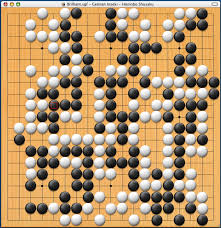 |
| ... Peter Mitchell, Herbert A. Simon ... 593 x 480 - 79k pro.corbis.com [ 更多來自 pro.corbis.com 的資訊 ] | Herbert A. Simon, USA, left, ... 356 x 480 - 53k pro.corbis.com | 1)■Herbert A. Simon 120 x 160 - 6k - gif www.yumau.com | The Herbert A. Simon Award for ... 243 x 243 - 54k - jpg knowledgetoday.org | In 1957, Herbert A. Simon, ... 773 x 795 - 294k - jpg mathgeek.typepad.com |
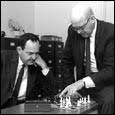 |  |  |  |  |
| Allen Newell and Herbert A Simon 115 x 115 - 5k - jpg www.cs.cmu.edu [ 更多來自 www.cs.cmu.edu 的資訊 ] | Shelley Taylor accepts the Herbert ... 400 x 267 - 16k - jpg blog.aapss.org | 組織(原書第2版). 組織(原書第2版) 137 x 200 - 7k www.zker.cn | From Herbert A. Simon, the father of ... 283 x 424 - 179k - png veneziaenterprises.com | Steven Pinker: Herbert A. Simon ... 288 x 202 - 28k - jpg www.aapss.org |
 |  |  |  | |
| Herbert A. Simon Professor of ... 95 x 131 - 3k law.vanderbilt.edu | Herbert A. Simon 123 x 161 - 3k www.interaction-design.org | ... rationality - Herbert A. Simon 500 x 500 - 7k - gif www.provenmodels.com | ... in Memory of Herbert A. Simon 240 x 240 - 10k www.amazon.com [ 更多來自 ecx.images-amazon.com 的資訊 ] | ... Herbert A. Simon from Wikipedia ... 240 x 237 - 36k - jpg ches |
| 1 | 2 | 3 | 4 | 5 | 6 | 7 | 8 | 9 | 10 | 下一頁 |
